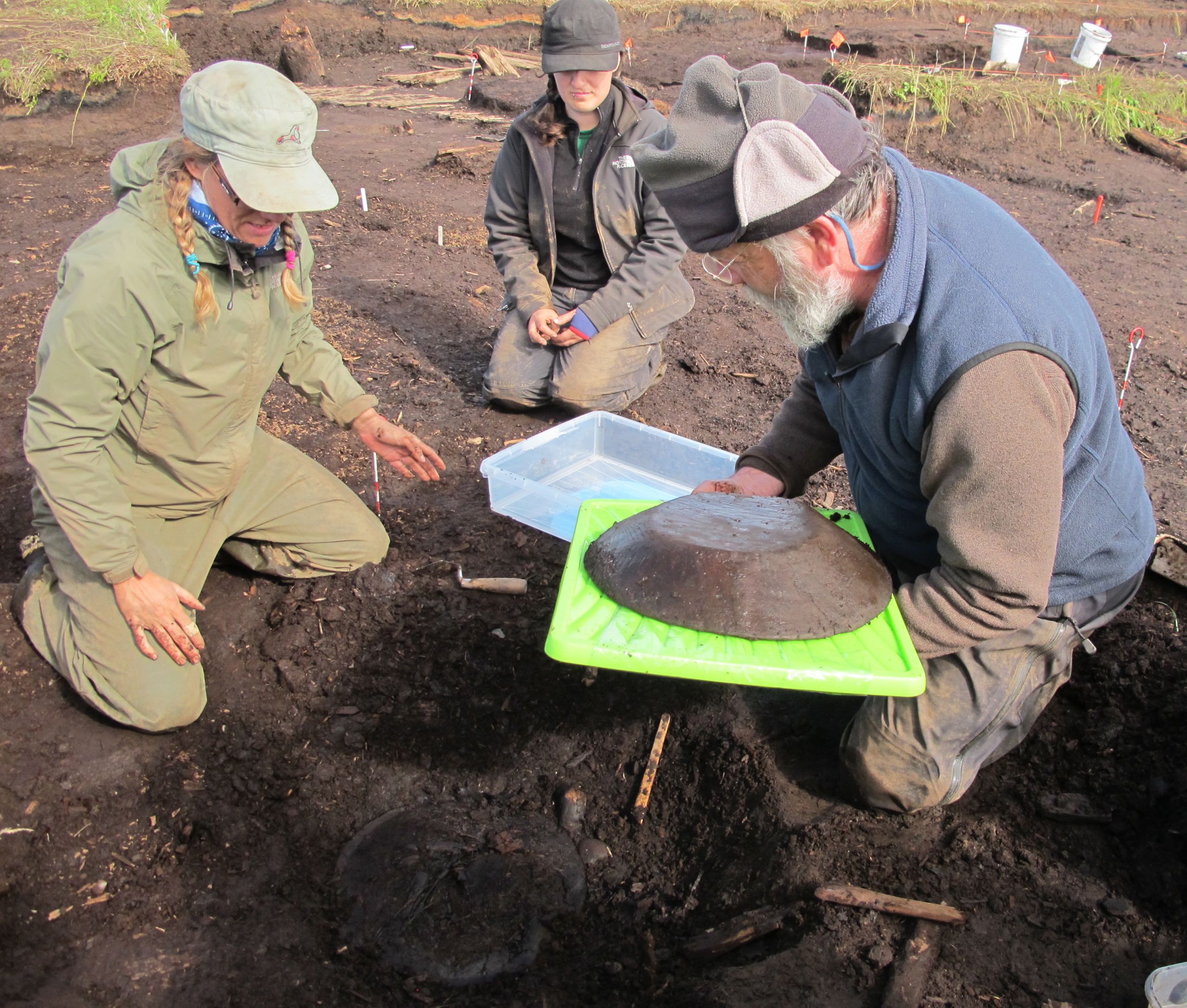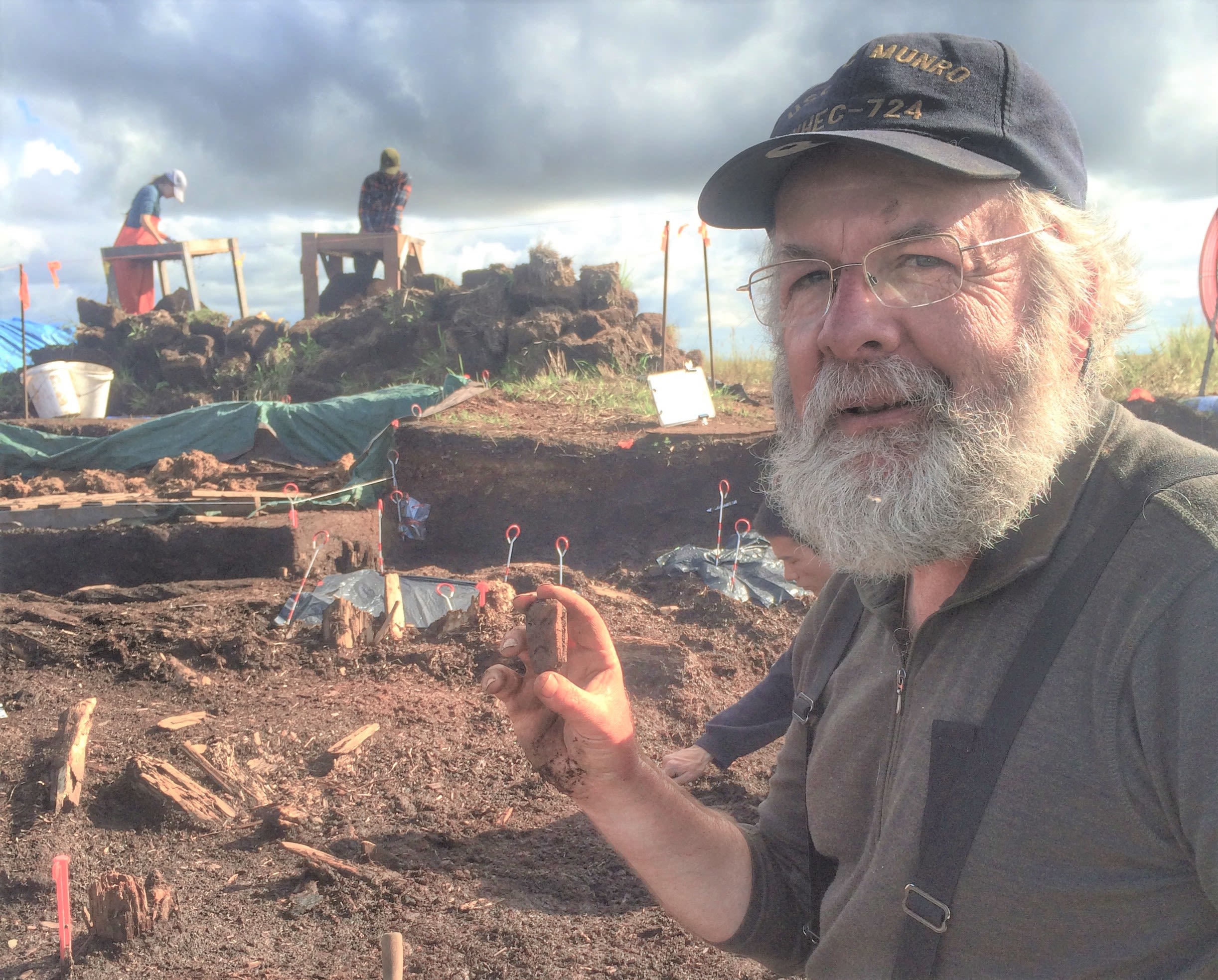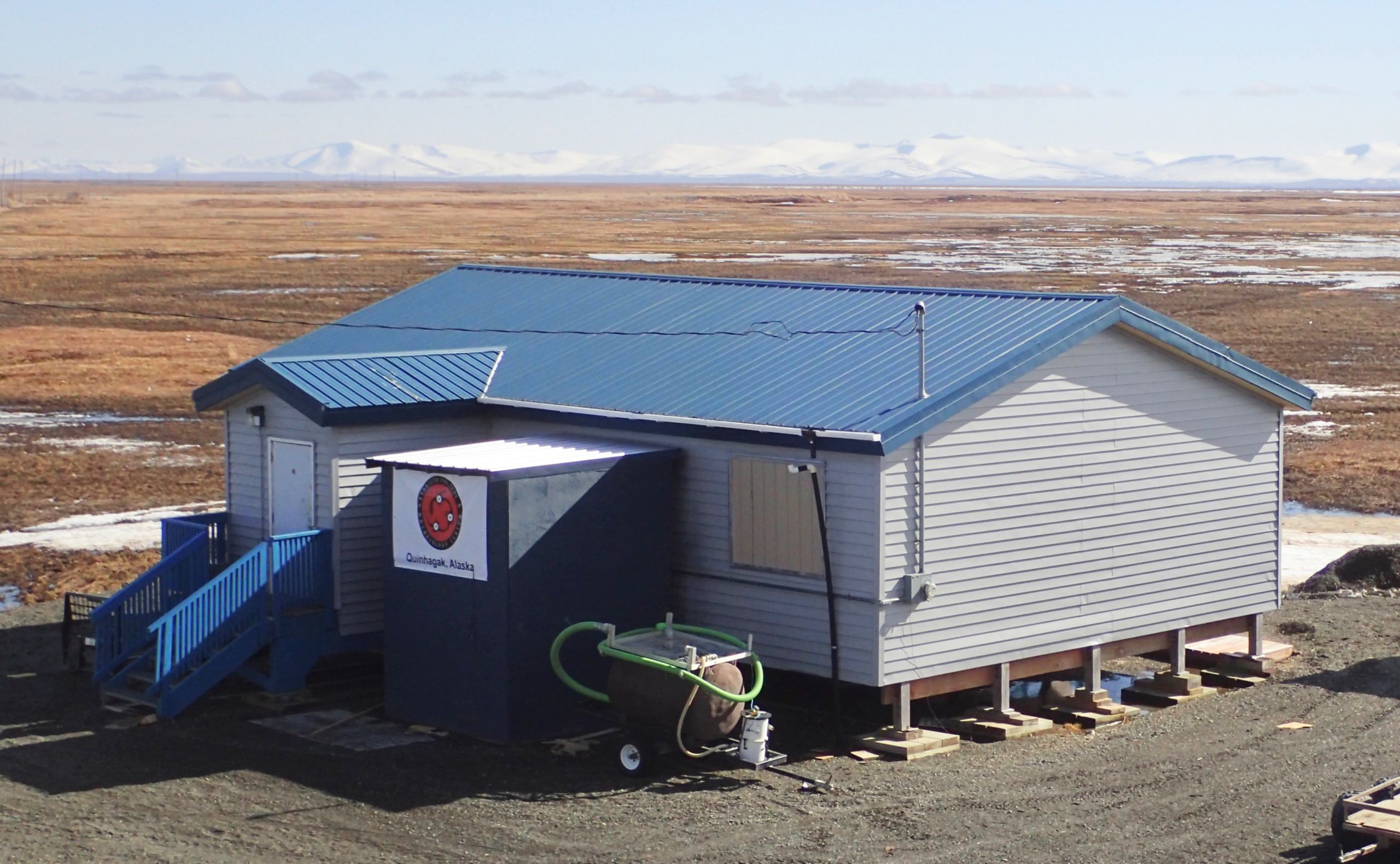Uncovering ancient Indigenous Alaskan settlements with archaeological research
Researchers discovered and preserved the largest
ever collection of pre-contact Yup'ik artefacts and helped
the community strengthen its cultural heritage.

Now more than ever, the effects of climate change can be seen around the world. As we experience extreme weather conditions and warming climates, this huge environmental challenge threatens not only our land, oceans, and wildlife, but also our heritage. Polar regions are especially vulnerable as ice caps melt and water levels rise, which endangers Indigenous communities in these regions and can result in the loss of important archaeological sites.


Dr Watterson, Dr Hillerdal, Dr Knecht and Dr Mossolova
Dr Watterson, Dr Hillerdal, Dr Knecht and Dr Mossolova
In Quinhagak, a small coastal village in the Yukon-Kushokwim Delta ( Y-K-Delta) of Western Alaska, the Yup’ik people faced unprecedented change as melting permafrost and coastal erosion threatened their livelihoods and settlements.
As Quinhagak’s shoreline began to dramatically erode, a huge collection of pre-contact artefacts was uncovered. Imbedded in the land for more than four centuries, items began to wash up on the shore after being frozen for hundreds of years by the Arctic’s extreme conditions.
Discovering a prehistoric settlement
Traditionally, the settlements of Yup’ik ancestors would be left untouched, however Quinhagak’s residents and the village corporation, Qanirtuuq Incorporated, initiated a project with Dr Rick Knecht, Dr Kate Britton and Dr Charlotta Hillerdal from the University of Aberdeen to save the artefacts before they could be washed away by winter storms and flooding.
Villagers worked in partnership with researchers on a programme of archaeological survey and followed a trail of carved dolls, masks, bowls, baskets, and tools along the shoreline to find an eroding prehistoric village, which researchers believe was occupied between 1300-1650AD.
For eight years, the excavation team visited the Nunalleq (meaning ‘Old Village’ in Yup’ik language) archaeological site every summer to painstakingly recover and preserve the objects, including wooden ritual masks, ivory tattoo needles and a belt of caribou teeth.
As the permafrost covering the site melted further, the team battled against the clock to remove each artefact before the site was lost to storms and the sea.


Preserving heritage and culture



However, as soon as the objects were removed from the ground they began to deteriorate rapidly. This made on-site conservation work impossible for the excavation team, who made the decision to transport the collection of more than 100,000 items to the University, to allow conservators to oversee the preservation treatment.
"This was one of the largest collections ever recovered from a single site in Alaska and we were amazed that items dating back more than four centuries could be preserved in such extraordinary condition.
By preserving thousands of these important cultural heritage artefacts such as pottery, lithics, wooden artefacts, carved ivory objects, masks and figures, we have been able to better understand the past living conditions, technologies, diets and subsistence strategies of the Yup’ik people and their ancestral relationships with other Arctic groups.
Although the collection had to be transported to Aberdeen for conservation, it was always our goal to return it to Quinhagak, where the collection belongs."
Connecting with the community
In August 2018, the Nunalleq Culture and Archaeology Centre (NCAC) was opened in the village.
Displaying most of the returned artefacts uncovered in the project, the community-owned museum is now a focal point for Yup’ik archaeology in Quinhagak and reflects the community’s pride in its heritage.
Featuring a rotating exhibition that is accessible for ‘hands-on’ encounters, the Centre has become a hub for awareness-raising activities, such as creative workshops, and has increased understanding of Quinhagak’s local traditions and culture across generations.
By encouraging participation, within and beyond the community, the Centre provides an avenue to impart traditional knowledge to children who now have a new idea of what being Yup’ik means, and demonstrates how Yup’ik ancestors adapted through changing environments due to their dependency on and connection to the land.


Inspiring expression

The Centre runs an extensive programme of outreach and educational development, to change the way children learn about the past, build skills within the community, and provide new insights into the Y-K-Delta region. It also includes a lab for preservation which has allowed Aberdeen’s researchers to train local staff and volunteers and created capacity for future discoveries to be processed locally. By reducing the need to transport items to and from the region, the Centre has created a template for sustainable local management of archaeological heritage.
The research has also inspired a variety of cultural, educational and artistic activities, including films produced by local school children, art by contemporary Yup’ik artist Drew Michael, an award-winning short film by Alaskan filmmaker Joshua Branstetter, a 10-page photographic feature in National Geographic and the re-formation of the Quinhagak Dancers. Additionally, Scottish author, Kathleen Jamie, spent six weeks at the excavation site as part of her collection of essays, Surfacing.
Ultimately, the team’s research has not only enabled preservation of important cultural artefacts but has also helped residents to illuminate their past and strengthen community resilience, cultural heritage, and identity.


Impact
- One of the largest archaeological collections ever recovered from a single site in Alaska and the largest collection of pre-contact Yup’ik artefacts including unique records such as animal bone, fur, and human hair
- The findings are hugely significant as they account for more than 90% of everything that is known about the pre-contact Yup’ik people – one of North America’s major Indigenous groups
- Items uncovered revealed the first archaeological evidence of the ‘Bow and Arrow Wars’
- The Nunalleq Culture and Archaeology Centre (NCAC) allows members of the community, of all ages, to connect with their heritage and provided an opportunity for local people to be trained in conservation techniques
- The role the Centre plays in the community was recognised by Alaskan senator Lisa Murkowski who identified NCAC as a potential nominee for the 2019 National Medal for Museum Service by the Institute of Museum and Library Services
- As part of the Centre’s educational outreach, new resources were created to enable teaching of archaeology at a local school for the first time. As well as being distributed to schools across Y-K Delta and on Kodiak Island, the education packs are also being trialled in schools in Scotland to teach archaeology, climate change and cultural diversity

More Environment and Biodiversity stories








